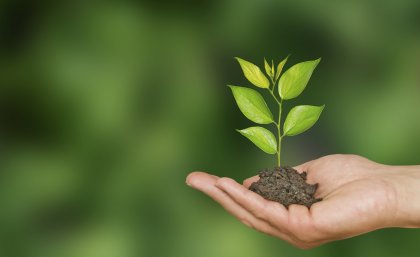
Rising temperatures will put almost one quarter of trees in Australian cities at risk by 2070, according to a study involving a University of Queensland researcher.
Researchers from the Clean Air and Urban Landscapes Hub (CAUL) found that 24 per cent of all public trees are at high risk from increased temperatures in urban environments due to climate change and urban heat islands.
CAUL researchers, found that in a business-as-usual emissions scenario, by 2070, trees in the high-risk category would likely not be suitable for future climates, would not perform as well and would be more vulnerable to things like diseases.
UQ PhD graduate and study co-author Lyndal Plant said that techniques to screen species for changing urban climates are critical to tree managers seeking to build both cooler, greener cities and urban forests resilient to the increasing temperatures.
“Rather than simply increasing the diversity of species used in parks and streetscapes, choosing heat resilient species can prolong useful life and improve pest and disease tolerance”.
The research was led by CAUL Project Leader Dr Dave Kendal, based in UoM’s Faculty of Science.
“Australian cities contain 10s of millions, if not 100s of millions of trees that provide important functions such as cooling and slowing stormwater run-off, and providing habitat for birds and animals,” Dr Kendal said.
“But there is growing recognition that increasing temperatures, due to urban heat and climate change, are a threat to some tree species in our cities.”
The study analysed the risk of temperature increases to 1.9 million trees in 29 local government authorities across Australia, from Launceston to Darwin, and Brisbane to Perth.
Every tree was analysed to see how close it was to known temperature limits in current climates, an emissions-limited climate change scenario in 2040 assuming emissions stabilisation, and a business-as-usual emissions scenario in 2070.
The study looked at 1,392 species of trees including Australian natives, European deciduous trees, as well as tropical and sub-tropical flowering trees.
The study found new tree species can be introduced to our cities to maintain resilience, and could provide a wide range of benefits.
“We have an opportunity to improve the sustainability of our cities through this renewal process,” Dr Kendal said.
“Meaningful engagement with the community and industry will help create successful urban forests of the future that provide a wide range of benefits for people and wildlife in cities.”
The report can be viewed online here.
Media: UQ’s Lyndal Plant, lyndal.plant@uq.edu.au; UoM’s Dr Nerissa Hannink, nhannink@unimelb.edu.au, +61 3 8344 8151 or 0430 588 055.
.jpg)










